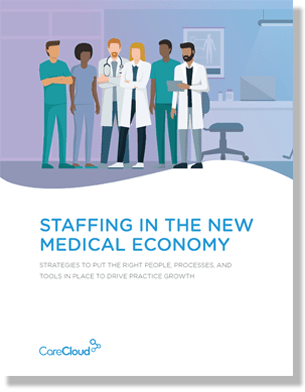The ability to share medical images is part of the federal push to implement progressive data-sharing capabilities in healthcare organizations. Health information exchanges (HIE), for instance, especially depend on this.
However, while the picture archiving and communication systems (PACS) used by providers today can perform plenty of functions with images – create, access, annotate, store – they typically have a hard time sharing, where problems arise with the platform, security, and data performance.
So how can you solve these medical imaging problems?
Choose the Cloud
Cloud computing – or a network of servers enabling users to combine and use computing power on an on-demand basis – represents fantastic opportunities for healthcare. The cloud computing medical imaging market in the United States was already valued at an estimated $56.5 million in 2010, and growth isn’t expected to slow.
Why is that? The cloud allows healthcare organizations to store, archive, access, and share images in a more manageable and cost-effective manner, while overcoming many of the legal and technical challenges imaging presents.
Cloud-based PACS makes it easier to create more connected platforms, where consolidating and storing patient imaging and information is located in one central repository. Also, because of its scalability, the cloud is perfectly equipped to handle an organization’s needs and saves money over time as it increases efficiency.
Ensure You’re Secure
Healthcare organizations are required to ensure their data is secure against anticipated threats. The HIPAA Security Rule requires providers and other healthcare organizations to enable administrative, physical, and technical protections to maintain the integrity of personal health information.
Cloud-based PACS will boast features like 256-bit encryption and even single sign-on (SSO) technology on many occasions. Not to mention, you don’t have to worry about your server being damaged or stolen – it’s not in your office!
Keep Your Data Performing
Accessing, viewing, and annotating digital images don’t have to be slow processes. Changing platforms – say, jumping on the cloud, as we mentioned above – can give you the necessary bandwidth to handle image volume, or the ability to archive older images in cost-effective data storage systems, if you’d like.
A switch to the cloud also negates the need to upgrade individual technology among staff members – security, backups, and disaster recovery policies can be managed quickly and safely in a centralized manner. Lastly, avoid long wait times on the cloud – access images faster from disconnected data storage systems.
What kind of medical imaging problems are you facing at your practice?




